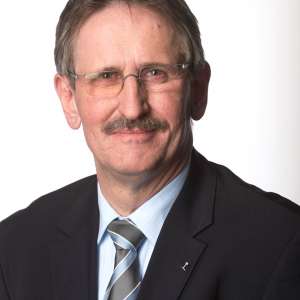 today 132
today 132
A glance at the future is urgently needed

Thomas Mainka, Dr. Eng.
President of VDEI and Consulting Engineer
In the debate on the future of the railways, one thing is certain: in 30 years’ time, people will still want to get from A to B comfortably and reliably. Which modes of transport in whatever combination will be chosen as well as their terms of use will depend on the requirements of future customers and on the available options. With steadily progressing development it becomes clear that intelligent solutions will have a major influence on future mobility.
Any prospective means of transport must be customer-friendly – i.e. individually selectable –, safe, environmentally sound, rapid and reasonably priced. Railways will play an important role in this context provided they can ensure reliable service without disruption.
A closer look at the considerable resources to be spent with public funding and by the railways themselves on Germany’s rail infrastructure in the forthcoming years gives cause for confidence in the future prospects for rail transport as it is by far the safest and most eco-friendly mode of transport.
How can those responsible for rail infrastructure, such as network managers, planning engineers, contractors and suppliers help ensure punctual rail service in spite of the constant need for renewal and maintenance of the rail network?
The key concept is to maintain and build tracks “under rolling wheels”, a method already applied in track construction. Instead of closing tracks, the train service in the adjacent track should continue with as little disruption as possible. However, there are limits to this approach in rail service and site management. Station platforms and turnouts, bridges and crossings, signalling systems and survey markers are only some examples of potential obstacles that need to be by-passed. On the other hand, modern track-bound technology is used to produce optimum results at high speeds and consistent quality, particularly for larger track sections.
The deployment of track machines suited for such operations requires highly intelligent preparatory work. Frequently, schedule and resource planning must be capable of managing the movement and processing of enormous quantities within a short period of time. Moreover, track work must be embedded in rail service without resulting in any standstill. Railway engineers are responsible for the demanding task of planning and managing these work sites from the initial designs of their projects right up to acceptance and commissioning. In order to succeed, they need a very broad-based expertise and wide-ranging experience in railway systems.
For 60 years, VDEI has organised the iaf in Münster, offering a platform for renowned exhibitors to present their ideas for the future and state-of-the-art technologies. This exhibition is unique in Europe and shows the diversity of technical developments in store for the rail sector. We look forward to having an interesting exchange of concepts with you!
The Association of German Railway Engineers (VDEI) is the professional association for engineers working in the rail transport business. It offers its 4,500 members a wide range of expert information, events and opportunities for professional development.
iaf – International Exhibition for Track Technology 2017

Siegfried Krause, Dr. Eng.
VDEI-Service GmbH
Today, the iaf is the largest technical fair in the world in the field of track construction and maintenance. From 30th May to 1st June, more than 200 exhibitors from 18 countries will convene in Münster/Germany to present innovations from the fields of track technology and infrastructure in the Münsterland Hall of the Exhibition and Congress Centre.
The iaf emerged from the track expert meeting of the Association of German Railway Engineers (VDEI), which will take place for the 60th time this year. In the 1960s, the meeting was accompanied every second year by an exhibition of track machines and equipment; the first fairs to show machinery and equipment facilitating heavy manual track work. Pioneering exhibits in those days included jacks to lift and align tracks, motor-driven wrenching machines for loosening and tightening rail fastenings as well as rail saws and grinding machines for rail welds. The first large machines on show were those for track tamping and lining.
In the beginning, the premises of the former post rail station close to the Frankfurt-based headquarters of the German Federal Railways were used. Later the iaf took place in different venues including Bad Vilbel, Zurich, Hanover and Vienna.
Finally in 2003, the iaf moved to Münster, where the third exhibition hall had just been completed next to the Münster East Railway Station of the Westphalian State Railways (WLE). This track system presents a unique exhibition area in the middle of the fair’s premises. The outdoor area directly in front of the exhibition halls provides sufficient space for demonstrating road-rail technology, a growing trend in the business.
The rail sector is confronted with huge challenges concerning the renewal of rail infrastructure. The enormous financial resources earmarked in Germany’s federal budget for maintaining, upgrading and extending the rail network need to be spent as beneficially and sustainably as possible. To this end, the iaf will show the most recent technologies and solutions. I am very much looking forward to these innovations.
The iaf 2017 will again be under the auspices of Germany’s current Minister of Transport, Alexander Dobrindt. The opening ceremony will be attended by Michael Odenwald, State Secretary in the Federal Ministry of Transport, and Frank Sennhenn, CEO of DB Netz AG.